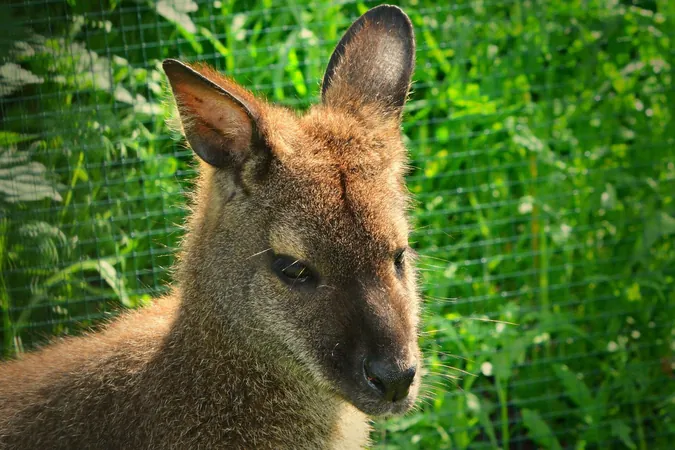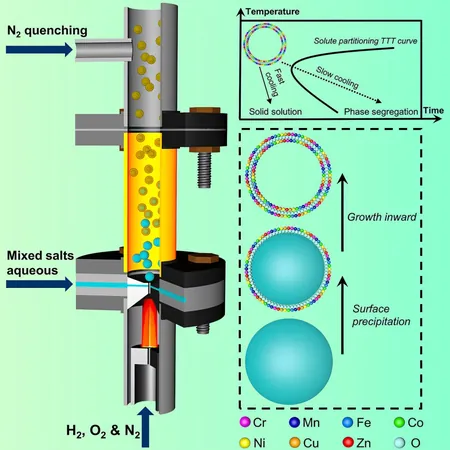
Exploring the Hidden Links Between Cancer Rates, Body Size, and Gestation: What Animal Studies Reveal About Human Risks
2024-10-24
Author: Wei
Introduction
Recent research published in *Cancer Discovery* presents fascinating insights into cancer prevalence among vertebrate species, revealing that larger body sizes correlate with higher cancer rates, while longer gestation periods are associated with lower risks of cancer.
This study builds on the longstanding work of Sir Richard Peto, who in 1977 proposed that cancer rates should increase with body size and lifespan. His findings led to the intriguing concept known as Peto's paradox—larger and longer-lived animals don't necessarily have higher cancer rates than smaller, shorter-lived species. This paradox has prompted extensive investigations into the underlying factors influencing cancer vulnerability across various species.
Research Methodology
Dr. Zachary Compton, a postdoctoral researcher at the University of Arizona Cancer Center, emphasizes the importance of comparative oncology in understanding human cancer susceptibility. "We are determined to unravel what makes humans uniquely susceptible to cancer,” said Compton. He and his team compiled an extensive dataset comprising 16,049 necropsy records from 292 species, collected from 99 animal care facilities across the U.S. and London.
The findings indicated that across all studied species, the median rate of uncontrolled cell growth (neoplasia) stood at 4.89%, while malignancy rates were at 3.2%. Notably, mammals exhibited the highest neoplasia (12%) and malignancy rates (7%), whereas amphibians had the lowest figures (1.2% and 0%, respectively). For context, around 39.3% of Americans are expected to be diagnosed with cancer at some point in their lives, highlighting a stark contrast between human and animal cancer rates, which may be skewed due to factors like lack of routine autopsies.
Key Findings
In a surprising twist that challenges Peto's paradox, the study found that for every tenfold increase in body mass, the risk of neoplasia escalated by 2.1%. Furthermore, characteristics such as maximum longevity, litter size in mammals, and somatic mutation rates were associated with increased cancer prevalence. Conversely, longer gestation periods surprisingly correlated with a decrease in both neoplasia and malignancy by about 5.3% and 5.65%, respectively, for each tenfold increase in gestation time.
The complexity of interactions among traits like body size and gestation times necessitates further research, according to Compton. He notes, "Understanding Peto's paradox requires examining the interconnectedness of various life-history traits, not just body mass or lifespan in isolation."
Captivity and Cancer
Moreover, the study raises questions about the role of captivity in cancer prevalence. While one might assume that longer lifespans in zoos could inflate cancer rates, the research showed that most tumors developed within an animal's natural lifespan, and longevity alone did not predict higher cancer rates.
Species Variation
The analysis further identified specific species with exceptionally high and low neoplasia rates. Ferrets and opossums topped the chart with neoplasia rates of 63% and 56%, respectively, while the Nubian ibex, tammar wallaby, and several bat species exhibited near-zero prevalence. This indicates potential avenues for exploring cancer suppression mechanisms in certain species, as well as examining high neoplasia species as models for studying cancer development.
Conclusion
"In summary, this research opens up a treasure trove of hypotheses regarding the molecular pathways and environmental factors influencing cancer across vertebrate species," Compton concludes. Despite the exhaustive nature of this research, limitations remain, such as a lack of environmental context and potential diagnostic oversights in necropsies, which warrant caution in interpreting the findings comprehensively. Understanding these complexities may be crucial not only for animal health but also for paving the way toward innovative strategies in cancer prevention and treatment in humans. Stay tuned for more groundbreaking revelations in cancer research!

 Brasil (PT)
Brasil (PT)
 Canada (EN)
Canada (EN)
 Chile (ES)
Chile (ES)
 España (ES)
España (ES)
 France (FR)
France (FR)
 Hong Kong (EN)
Hong Kong (EN)
 Italia (IT)
Italia (IT)
 日本 (JA)
日本 (JA)
 Magyarország (HU)
Magyarország (HU)
 Norge (NO)
Norge (NO)
 Polska (PL)
Polska (PL)
 Schweiz (DE)
Schweiz (DE)
 Singapore (EN)
Singapore (EN)
 Sverige (SV)
Sverige (SV)
 Suomi (FI)
Suomi (FI)
 Türkiye (TR)
Türkiye (TR)